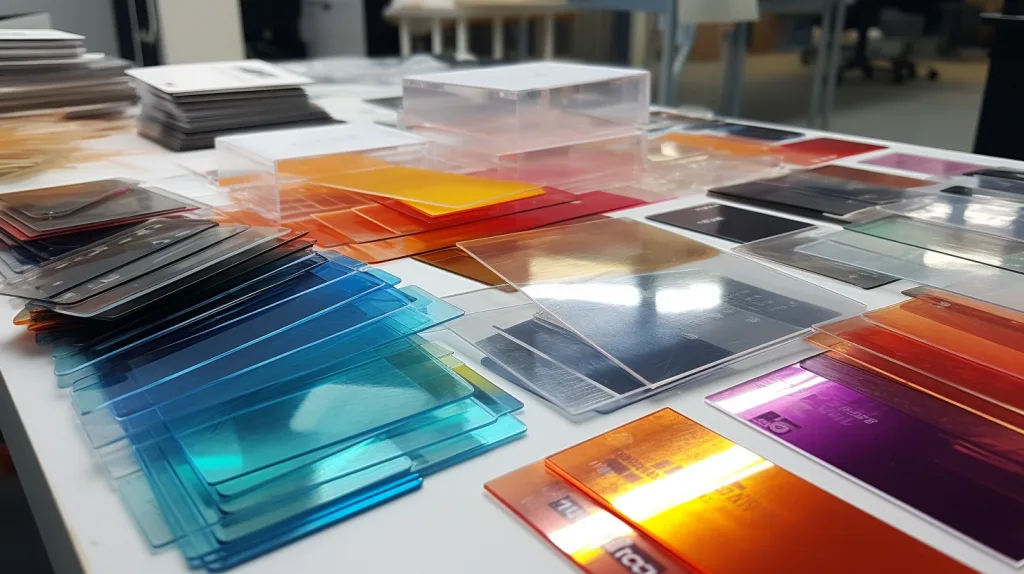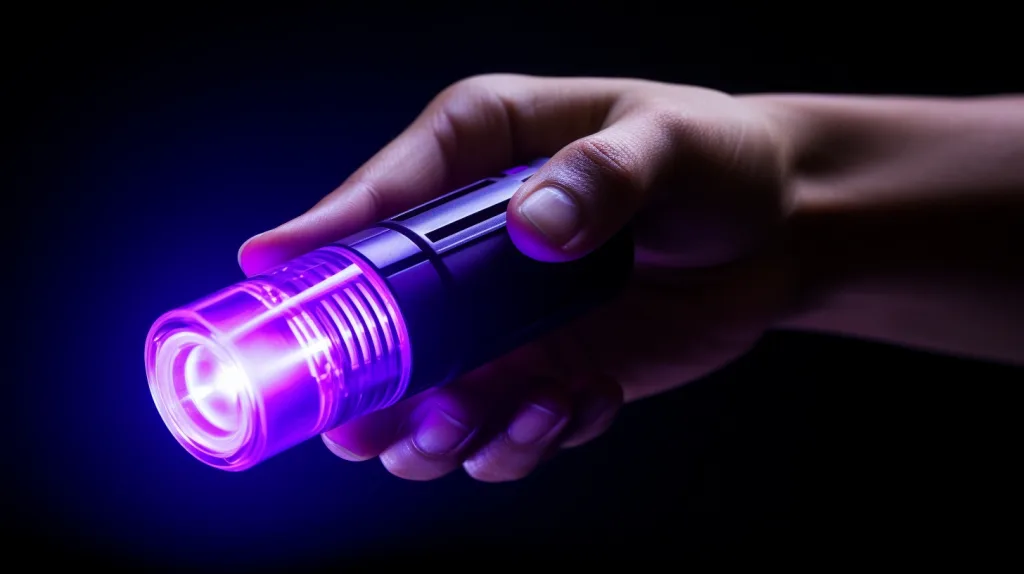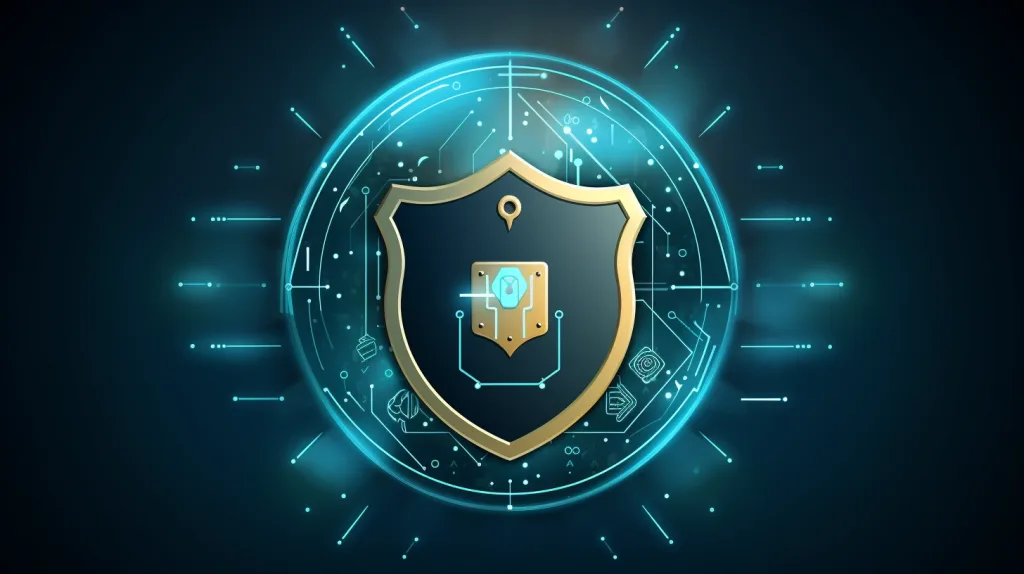Good Fake ID
Contents
- 1
- 2 What is a Good Fake ID?
- 3 Reasons behind Fake ID Usage
- 4 The Legal Risks Associated with Fake IDs
- 5 Famous Cases Involving Fake IDs
- 6 The Process of Making a Fake ID
- 7 Materials Used to Make Good Fake IDs
- 8 Identifying Features of a Good Fake ID
- 9 Bad vs. Good Fake IDs: Key Differences
- 10 The Market for Good Fake IDs
- 11 Online Presence and Fake ID Shops
- 12 Impact on National and International Security
- 13 Role of Technology in Fake ID Creation
- 14 How Agencies are Catching Fake IDs?
- 15 Modern Prevention Methods Against Fake IDs
- 16 Real-world Consequences of Using a Good Fake ID
- 17 Fake IDs in Popular Culture
- 18 How to Report Suspected Fake IDs?
- 19 Tips for Parents: Signs Your Child Might Have a Fake ID
- 20 Solutions to the Fake ID Problem
- 21 Reducing the Appeal of Fake IDs: A Closer Look at Policies
- 22 References
What is a Good Fake ID?
A “good” fake ID is one that closely mimics an authentic identification document in both appearance and feel. The key to its perceived legitimacy lies in several critical characteristics:
- High-Quality Materials: The foundation of a convincing fake ID is the material used. Authentic IDs are typically made from specific grades of PVC or polycarbonate. A good fake ID will mimic these materials closely, ensuring that the card has a similar flexibility, weight, and texture to a real one.
- Accurate Security Features: Genuine IDs come equipped with a range of security features designed to thwart counterfeiting. These include holograms, UV printing, microtext, and watermarks. A high-quality fake ID replicates these features with a high degree of accuracy. For instance, the holograms must not only be visually similar but also change appearance when tilted at different angles, just like those on legitimate IDs.
- Professional Craftsmanship: The production of a good fake ID isn’t merely about printing an image on a plastic card. It involves careful attention to detail, ensuring that every aspect of the ID, from the font type to the color hues, closely matches the original. The placement of the photo, the clarity of the printed text, and even the way the card edges are finished all contribute to the overall authenticity.
- Accurate Personalization: Beyond the physical attributes, the information on the ID must also be plausible. This includes not just the personal details like name and date of birth but also elements like the ID number, which in real IDs often follows specific coding systems.
- Magnetic Stripe or Barcode Encoding: Many modern IDs contain a magnetic stripe or barcode that stores the holder’s information. A good fake ID often includes this feature, encoding it in a way that when scanned, it provides coherent information that matches the printed details.
It’s important to note that while these characteristics define a “good” fake ID in terms of its resemblance to genuine identification, the creation, possession, or use of such documents is illegal and carries significant legal risks. The sophistication involved in creating a high-quality fake ID underscores the challenges faced by authorities in distinguishing them from genuine documents and preventing their misuse.

Reasons behind Fake ID Usage
The reasons individuals seek fake IDs are varied, each driven by different motivations and circumstances. Understanding these reasons is crucial for effectively addressing the issue:
- Underage Drinking: This is perhaps the most common reason for fake ID usage, especially among teenagers and young adults. In many regions, legal age restrictions on alcohol consumption prompt those underage to obtain fake IDs. These IDs enable them to purchase alcohol or gain entry to bars and clubs, bypassing age-related legal barriers.
- Access to Restricted Venues and Services: Besides alcohol, there are other age-restricted venues and services, such as certain clubs, concerts, and even some websites. Young individuals often use fake IDs to gain access to these venues, experiencing a sense of freedom and adult privileges.
- Identity Theft: In more sinister cases, fake IDs are used in identity theft schemes. Here, the goal is to impersonate someone else to gain access to their financial resources, benefits, or services. This form of fake ID usage is particularly concerning due to its potential to cause significant harm to the victims.
- Circumventing Legal or Criminal Issues: Individuals with a suspended driver’s license or with a criminal record might use fake IDs to hide their true identity. This allows them to avoid legal consequences or continue activities that their real identity would prohibit.
- Employment or Residential Purposes: Fake IDs can also be used to secure employment or residence, especially by those who lack the necessary legal documents. This is often seen in cases of undocumented immigrants who need identification for work or housing.
- Social Status and Peer Pressure: Among adolescents and young adults, the possession of a fake ID is sometimes seen as a status symbol, signifying a rebellious or adventurous spirit. Peer pressure can also play a role, where individuals feel compelled to obtain a fake ID to fit in with their social group.
- Experimentation and Curiosity: In some instances, the drive to obtain a fake ID is out of sheer curiosity or the thrill of engaging in something illicit. The challenge of acquiring and using a fake ID can be seen as an exciting adventure.
Each of these motivations highlights different societal, legal, and cultural challenges. While the reasons for obtaining fake IDs vary, the common thread is a desire to bypass restrictions or assume an alternate identity. This understanding is vital for developing targeted strategies to combat the proliferation of fake IDs and address the underlying issues that drive their demand.

The Legal Risks Associated with Fake IDs
The possession, creation, or use of fake IDs carries significant legal risks, which can vary widely depending on the jurisdiction and the nature of the offense. Understanding these potential consequences is essential for anyone considering obtaining or using a fake ID:
- Criminal Charges: In many places, using a fake ID is a criminal offense. The severity of the charge can range from a misdemeanor to a felony, depending on factors like the intent behind the use and the harm caused. Common charges include forgery, identity theft, and fraud.
- Fines and Penalties: Being caught with a fake ID often results in fines, which can be substantial. These fines are intended to serve as a deterrent against the use of fake IDs.
- Incarceration: For more serious offenses, such as using a fake ID for identity theft or to commit fraud, jail or prison time is a real possibility. The length of incarceration can vary, sometimes extending to several years for more severe cases.
- Probation: Instead of or in addition to incarceration, individuals caught with a fake ID might be placed on probation. This usually involves regular check-ins with a probation officer and adherence to certain conditions, like not committing any more crimes.
- Record of Criminal Conviction: Having a criminal record can have long-lasting effects, including difficulties in finding employment, renting housing, and accessing educational opportunities. A conviction for a fake ID-related offense can be particularly damaging for young adults.
- Loss of Driving Privileges: In cases where a fake ID is used to circumvent driving restrictions, individuals may face the suspension or revocation of their driver’s license.
- Educational Consequences: Students caught with fake IDs might face additional penalties from their educational institutions, such as disciplinary action or expulsion.
- Impact on Professional Licenses: For those in professions that require licensing, a conviction involving a fake ID can lead to the loss of professional licenses or barriers to obtaining them in the future.
- Immigration Consequences: For non-citizens, the use of a fake ID can have severe immigration consequences, including deportation or ineligibility for future immigration benefits.
These legal risks highlight the serious nature of fake ID offenses. The consequences extend far beyond the immediate legal penalties, potentially impacting an individual’s future opportunities and quality of life. It’s important for people to be fully aware of these risks before considering the use of a fake ID.
Famous Cases Involving Fake IDs
Throughout history, there have been several high-profile cases where the use of fake IDs has played a critical role. These cases provide a real-world context to the implications and the seriousness of using fake identification:
- The Underage Drinking Case of a Celebrity: A well-known young celebrity was once caught using a fake ID to gain entry into a nightclub. This incident made headlines, highlighting the prevalence of fake ID usage among underage individuals seeking access to restricted environments.
- The Airport Security Breach: In a notable security breach, an individual managed to board an international flight using a fake passport. This case raised significant concerns about airport security and the effectiveness of screening processes.
- The Identity Theft Ring: Law enforcement agencies uncovered a large-scale identity theft operation where criminals used fake IDs to open credit accounts in victims’ names. The case demonstrated the potential for fake IDs to facilitate significant financial crimes and the importance of robust identity verification processes.
- The Illegal Immigration Case: A group of individuals was caught using fake IDs to work illegally in another country. This case shed light on the challenges faced by immigration authorities in verifying the authenticity of documents and the ways fake IDs can be used to circumvent immigration laws.
- The Undercover Investigation: An investigative journalist used a fake ID to expose loopholes in a government system. While the use of the fake ID was for a journalistic purpose, it underscored the ease with which these documents could be obtained and used for various intents.
- The College Admissions Scandal: A student gained admission to a prestigious university using a fake ID and falsified documents. This incident brought to light the issue of academic integrity and the lengths individuals might go to secure admission to elite institutions.
- The Voter Fraud Incident: In a controversial case, individuals were found using fake IDs to vote in an election. This case sparked a national debate on voter ID laws and election security.
- The Underworld Connection: Authorities discovered that members of organized crime groups frequently used fake IDs for various illegal activities, ranging from money laundering to evading law enforcement. This case highlighted the role of fake IDs in facilitating organized crime.
These incidents, varying from relatively harmless to extremely serious, illustrate the diverse uses and significant consequences of fake ID usage. They serve as a cautionary tale about the legal, social, and security risks associated with fake IDs.

The Process of Making a Fake ID
Creating a fake ID is a complex process that involves several steps and requires specific equipment and skills. While this description is purely for informational purposes and not an endorsement or guide, understanding the process underscores the sophistication involved in producing these fraudulent documents.
- Gathering Original ID Samples: The first step often involves collecting various samples of legitimate IDs to understand their design, features, and materials. This can include IDs from different states or countries, as each has unique elements.
- Design and Template Creation: Using graphic design software, counterfeiters create digital templates that mimic the layout, fonts, and graphics of real IDs. This step requires a keen eye for detail to ensure that all visual aspects of the ID are accurately replicated.
- Material Procurement: Authentic IDs are typically made from PVC, Teslin, or polycarbonate. Counterfeiters source similar materials to replicate the feel and flexibility of genuine IDs. The quality of these materials plays a significant role in the final product’s authenticity.
- Printing and Embellishment: Specialized printers are used to print the ID. Features like holograms, UV imagery, and watermarks are then added. These security features are challenging to replicate, requiring advanced printing technology and expertise.
- Encoding and Personalization: For IDs with magnetic stripes or barcodes, counterfeiters encode these with information that matches the printed details. Personal details like name, address, and photo are then added, usually sourced from the customer.
- Lamination and Finishing: The printed ID is laminated to protect it and give it the appropriate texture and thickness. The edges are often treated to mimic the wear and look of a real ID.
- Quality Check: The final step involves a thorough inspection of the fake ID against a real one to ensure all features are accurately replicated. This includes checking the ID under different lights and angles and testing any magnetic or barcode features.
The process of making a fake ID requires not just technical equipment but also a deep understanding of the intricate security features of modern identification documents. The level of sophistication and resources needed for creating high-quality fake IDs highlights the challenges law enforcement faces in detecting and preventing their use. It’s important to remember that engaging in any part of this process is illegal and carries severe legal consequences.

Materials Used to Make Good Fake IDs
The production of high-quality fake IDs involves a variety of specialized materials, each chosen to closely replicate the look, feel, and functionality of genuine identification documents. The choice of materials is crucial in determining the authenticity of the final product.
- Plastics and Polycarbonates: Authentic IDs are typically made from durable materials like PVC (Polyvinyl Chloride) or polycarbonate. High-quality fake IDs often use similar plastics to match the weight, flexibility, and texture of real IDs.
- Teslin Paper: Some IDs, especially those with intricate security features, are printed on Teslin, a synthetic waterproof paper. This material is favored for its ability to absorb inks and toners, making it suitable for high-resolution printing.
- Specialized Inks and Toners: Regular printing inks are inadequate for replicating the complex color shifts and details of real IDs. Counterfeiters use specialized inks that can mimic these characteristics, including UV-reactive inks that are only visible under ultraviolet light.
- Holographic Overlays: Many real IDs feature holograms as a security measure. Creating convincing fake IDs, therefore, requires the use of similar holographic overlays, which are often custom-made to match specific patterns and designs.
- Magnetic Strips and Microchips: Some IDs, like driver’s licenses, have magnetic strips or microchips embedded in them, containing the holder’s data. Replicating these features involves sourcing blank strips or chips and the equipment to encode them correctly.
- Laminates: To protect the printed details and add a layer of authenticity, counterfeit IDs are often laminated. This lamination must closely match the type used in genuine IDs, which can vary in thickness and texture.
- Security Features: Additional security features like microtext, watermarks, and barcodes require precision tools and techniques to replicate. Microtext, for instance, necessitates high-resolution printers capable of reproducing tiny, legible text.
- Adhesives and Sealants: The various layers and components of an ID need to be securely bonded without adding noticeable thickness or disrupting the ID’s appearance. High-grade adhesives and sealants are used for this purpose.
The sophistication in materials and technology required to produce high-quality fake IDs highlights the extent of the illegal industry behind them. It also underscores the ongoing challenge for authorities in distinguishing fake IDs from genuine ones, as counterfeiters continually adapt to replicate the latest security features.

Identifying Features of a Good Fake ID
A good fake ID is distinguished by several key features that make it convincing and difficult to differentiate from a genuine document. These features are meticulously replicated to bypass various forms of verification and scrutiny:
- Accurate Visual Design: The overall layout, including font styles, sizes, and placements, should closely match the authentic ID. This also includes correct color schemes and graphic elements like state seals or national symbols.
- Holograms and OVDs (Optically Variable Devices): Many IDs feature holograms or OVDs that change appearance when viewed from different angles. A convincing fake ID will have these holographic overlays replicated in detail, ensuring they behave similarly under different lighting conditions.
- UV (Ultraviolet) Features: Under UV light, genuine IDs often display hidden images or text. High-quality fake IDs replicate these UV features, which can be a deciding factor in passing advanced forms of verification.
- Magnetic Stripes and Barcodes: Functional magnetic stripes or barcodes that contain encoded information matching the printed data are a hallmark of sophisticated fake IDs. When scanned, this information should display correctly.
- Microprint: Authentic IDs often incorporate microprint — very small text that is difficult to reproduce without high-resolution printing technology. Good fake IDs mimic this feature, adding to their authenticity.
- Tactile Elements: Certain IDs have raised text or tactile features, such as a raised date of birth or signature. Replicating these elements in a fake ID requires specialized printing techniques.
- Material and Texture: The feel of the ID, including its flexibility and texture, plays a significant role. Good fake IDs use materials that closely resemble those used in genuine IDs, such as PVC or polycarbonate.
- Security Seals and Watermarks: Embedded or printed security seals and watermarks that are visible under certain conditions are often replicated in high-quality fake IDs. These features are typically specific to each state or issuing authority and require detailed knowledge to replicate.
- Edge and Corner Inspection: The finishing touches, like the smoothness of edges and the quality of corners, can be telltale signs. Good fake IDs pay attention to these details, ensuring they are not overly rigid or poorly cut.
- Lamination Quality: The lamination on the ID should be seamless and free of air bubbles or peeling, mimicking the quality found on genuine documents.
These features collectively contribute to the effectiveness of a fake ID. The ability to replicate them accurately reflects the advancements in technology and techniques used by counterfeiters. It’s important for authorities and businesses to be aware of these features to better detect fake IDs, and for individuals to understand the complexity and illegality involved in their production and use.

Bad vs. Good Fake IDs: Key Differences
Understanding the distinction between poorly made and high-quality fake IDs is crucial, especially for those in positions of verifying identification. These differences often lie in the materials used, the attention to detail, and the level of craftsmanship.
Poorly Made Fake IDs
- Substandard Materials: These IDs often use inferior quality plastics or paper, leading to a flimsy feel. The difference in material quality is usually noticeable to the touch.
- Inaccurate Design and Typography: Colors might be off, fonts mismatched, and the layout may not align with genuine IDs. These visual discrepancies are often easy to spot.
- Lack of Detailed Security Features: Basic or no attempt to replicate complex security features like holograms, UV prints, or microtext. This makes them easily identifiable under scrutiny.
- Poor Lamination: The lamination on these IDs may be uneven, with air bubbles or peeling edges, which is not typically seen in real IDs.
- Inconsistent Personal Information: The information might be printed poorly, with typos or incorrect formatting. The barcode or magnetic strip (if present) often does not scan correctly.
- Rough Edges and Corners: The cutting process is imprecise, leading to rough or uneven edges and corners, which is a clear sign of a fake ID.
High-Quality Fake IDs
- High-Grade Materials: These IDs use materials that closely mimic those used in genuine IDs, such as PVC or Teslin, providing a similar look and feel.
- Accurate Design and Fonts: The visual design, including fonts, colors, and layout, closely matches that of real IDs, making them harder to differentiate at a glance.
- Advanced Security Features: High-quality fake IDs replicate complex security features like holograms, UV features, and microtext with a high degree of accuracy.
- Seamless Lamination: The lamination is professionally done, with no air pockets or peeling, resembling that of genuine IDs.
- Consistent and Accurate Personal Information: The printed information is precise, and additional features like barcodes or magnetic stripes are functional and encode correct information.
- Smooth Edges and Corners: The cutting and finishing process is refined, resulting in smooth edges and corners, akin to real IDs.
Key Takeaway
The primary differences between poor and good fake IDs lie in the level of detail and quality of materials used. While poor fake IDs can often be spotted easily due to their lack of sophistication, high-quality fake IDs require a more trained eye and often sophisticated equipment to identify. The existence of such high-quality fake IDs poses significant challenges to those responsible for verifying identification, emphasizing the need for ongoing training and the use of advanced verification technologies.

The Market for Good Fake IDs
The market for fake IDs operates largely in the shadows, driven by both demand and technological advancements. Understanding this market involves analyzing its pricing, distribution channels, and customer demographics.
Pricing
- Cost Variation: The cost of a fake ID varies significantly based on quality and complexity. Basic ones can be relatively cheap, while sophisticated IDs that replicate advanced security features are more expensive.
- Payment Methods: Transactions often occur through untraceable methods, like cryptocurrencies or money orders, to maintain anonymity.
Distribution Channels
- Online Platforms: Many fake ID operations leverage the anonymity of the internet. Dark web marketplaces and encrypted messaging apps are common channels. Some bold vendors even operate through surface web, using discreet marketing.
- Word of Mouth: Traditional word-of-mouth referrals still play a role, especially among high school and college students.
Customer Demographics
- Young Adults and Teenagers: The primary demographic includes teenagers and young adults, often seeking IDs for age-restricted activities like drinking or club entry.
- Immigrants: Undocumented immigrants may seek fake IDs for employment or residency purposes.
- Criminals and Fraudsters: Individuals involved in criminal activities use fake IDs to mask their identities or commit identity theft.
Market Dynamics
- Supply and Demand: The market is driven by a high demand among certain age groups and individuals seeking anonymity for various reasons. Supply is maintained by clandestine operations that can rapidly adapt to law enforcement tactics.
- Technology and Sophistication: As security features in legitimate IDs advance, so does the technology used to replicate them. This technological arms race keeps the market dynamic and continually evolving.
- Legal and Ethical Risks: Both sellers and buyers face significant legal risks. The market operates in a legal grey area, with enforcement agencies continually seeking to dismantle operations.
The market for fake IDs is a complex and ever-evolving landscape, influenced by technological advancements, varying customer needs, and the continuous efforts of law enforcement to curb these illegal activities. It’s a market characterized by its clandestine nature, the diversity of its participants, and the constant push-and-pull between the creation of security features in legitimate IDs and the counterfeiters’ ability to replicate them.

Online Presence and Fake ID Shops
The advent of the internet and advancements in technology have significantly transformed the landscape of fake ID operations. The digital realm has not only facilitated the spread but also greatly enhanced the accessibility of these operations.
Emergence of Online Platforms
- E-Commerce Style Websites: Many fake ID providers operate through sophisticated websites that mimic legitimate e-commerce platforms. These sites often feature catalogs of available IDs, customer reviews, and even customer service chats.
- Dark Web Marketplaces: The anonymity of the dark web provides a more secure environment for both sellers and buyers of fake IDs. Here, transactions are less traceable, carried out using cryptocurrencies.
Enhanced Anonymity
- Use of Cryptocurrencies: Transactions for fake IDs often involve cryptocurrencies like Bitcoin, providing anonymity and reducing the risk of detection.
- Encrypted Communication**: Communication between buyers and sellers is conducted through encrypted messaging apps or email services, protecting the identities of both parties.
Marketing Strategies
- Social Media and Forums: Some fake ID vendors use social media platforms and online forums to market their products, often using coded language or discreet advertisements.
- SEO and Online Advertising: Vendors also employ search engine optimization (SEO) techniques and sometimes even online advertising to attract potential customers.
Customer Experience
- User-Friendly Interface: The websites are often user-friendly, making it easy for potential buyers to place orders and upload photos and personal information.
- Customer Reviews and Feedback: Just like regular online shopping sites, these platforms sometimes feature customer reviews and feedback, which new buyers use to gauge the quality and reliability of the IDs.
Challenges for Law Enforcement
- Evolving Tactics: The online nature of these operations makes them more fluid and difficult for law enforcement to track. Vendors can quickly set up, shut down, or move their operations.
- International Jurisdiction Issues: Many fake ID sites are hosted in countries with lax internet laws, complicating legal actions and enforcement.
The internet has undeniably made it easier for fake ID operations to flourish. The combination of increased accessibility, anonymity, and the difficulty of policing online spaces presents significant challenges for authorities. For users, while it may seem like an easy and low-risk option, the legal ramifications of ordering a fake ID online are real and can be severe. The ease of access does not diminish the illegality and potential consequences of acquiring and using a fake ID.

Impact on National and International Security
The use of fake IDs poses significant challenges to national and international security, affecting various aspects from border control to anti-terrorism efforts. The ability to assume a false identity can have far-reaching implications for the safety and security of nations and their citizens.
Border Control and Immigration
- Illegal Entry and Overstay: Fake IDs can be used to cross borders illegally or extend stays without proper authorization. This undermines immigration laws and can strain the resources of border control agencies.
- Human Trafficking and Smuggling: Traffickers and smugglers often rely on fake IDs to move people across borders undetected, contributing to these global criminal activities.
Airport and Transportation Security
- Flight Security Risks: The use of fake IDs at airports can pose a direct threat to flight safety. Individuals on no-fly lists or with malicious intent might use fake IDs to bypass security screenings.
- Challenges in Screening Processes: Detecting fake IDs at airports requires advanced technology and well-trained personnel, adding layers of complexity and cost to security operations.
Law Enforcement and Criminal Activities
- Hindrance in Criminal Investigations: Fake IDs can impede criminal investigations by masking the true identities of suspects or witnesses, complicating law enforcement efforts.
- Facilitation of Criminal Networks: Organized crime groups often use fake IDs for various activities, including money laundering, drug trafficking, and illegal arms deals.
Anti-Terrorism Efforts
- Concealing Terrorist Identities: Terrorists may use fake IDs to hide their identities, travel undetected, and plan or execute attacks.
- Challenges in Tracking and Monitoring: The use of fake IDs makes it more difficult for intelligence agencies to track the movements and activities of suspected terrorists.
National Policy and International Cooperation
- Strain on Diplomatic Relations: The use of fake IDs can strain diplomatic relations, especially when used to circumvent visa agreements or engage in espionage.
- Need for International Cooperation: Combating the use of fake IDs often requires international cooperation and shared intelligence, underscoring the need for global efforts in addressing this issue.
The impact of fake IDs on national and international security is profound. Their use not only undermines the integrity of identification systems but also poses direct threats to public safety and security. This necessitates continual advancements in detection technology, training of personnel, and international collaboration to effectively combat the risks associated with fake IDs.

Role of Technology in Fake ID Creation
The evolution of technology has played a pivotal role in the creation and distribution of high-quality fake IDs. Advancements in various tech sectors have not only simplified the production process but have also enhanced the sophistication of these fraudulent documents.
Advanced Printing Technology
- High-Resolution Printers: The availability of high-resolution printers has been crucial. These printers can replicate intricate details like microtext and complex graphics, which are essential for creating convincing fake IDs.
- UV Printing Capabilities: Modern printers can now handle UV ink, allowing counterfeiters to include UV features that are visible only under ultraviolet light – a common security measure in official IDs.
Graphic Design Software
- Sophisticated Design Tools: Software like Adobe Photoshop and Illustrator enables counterfeiters to replicate the design of genuine IDs accurately. These tools can fine-tune colors, fonts, and layouts to closely mimic authentic documents.
- Template Sharing: The internet has facilitated the sharing of ID templates and design know-how, making it easier for counterfeiters to access and create fake ID designs.
Security Feature Replication
- Hologram Replication: Advances in printing technology have made it possible to replicate holographic images and other optically variable devices (OVDs) that were once a formidable barrier to counterfeiters.
- Magnetic Stripe and Chip Programming: The ability to encode and program magnetic stripes and microchips is now more accessible, allowing counterfeiters to add an extra layer of authenticity to fake IDs.
Online Distribution and Anonymity
- E-commerce Platforms and Dark Web: The rise of e-commerce platforms and dark web marketplaces has significantly streamlined the distribution of fake IDs. These platforms provide a degree of anonymity and a global reach.
- Cryptocurrency Transactions: The use of cryptocurrencies in transactions provides anonymity and financial security for both buyers and sellers, making the trade in fake IDs less risky from a financial standpoint.
Scanning and Encoding Technology
- Barcode and QR Code Creation: Technology to create scannable barcodes and QR codes that match the information on the ID has become more accessible, making fake IDs harder to detect.
- Data Encoding Techniques: Advances in data encoding allow counterfeiters to embed personal information into magnetic stripes or chips accurately.
The role of technology in the creation of fake IDs is significant and ever-evolving. As legitimate IDs incorporate more advanced security features, counterfeiters leverage technological advancements to keep pace. This ongoing technological arms race underscores the need for continuous innovation in ID verification and security measures. It also highlights the importance of staying updated on technological trends to effectively combat the challenges posed by fake ID creation.

How Agencies are Catching Fake IDs?
Law enforcement and security agencies employ a variety of methods and technologies to detect and intercept fake IDs. These strategies are continuously evolving to counter the advanced techniques used in the creation of high-quality fake IDs.
Advanced Scanning Devices
- ID Scanners: Many establishments use ID scanners that can detect anomalies in barcodes, magnetic stripes, and other encoded information. These scanners can quickly compare the scanned data with the printed information.
- UV Light Scanners: UV scanners are used to reveal hidden features that are only visible under ultraviolet light, a common security feature in official IDs.
Database Verification
- Cross-Referencing with Official Databases: Verification systems are in place that allow for the cross-referencing of an ID’s information with official government databases, making it easier to spot fake IDs.
- Biometric Verification: Some advanced systems cross-reference biometric data such as facial recognition against government records for added verification.
Physical Inspection Techniques
- Tactile Examination: Trained personnel often use tactile methods to feel for discrepancies in material, raised text, and other physical features.
- Visual Inspection Expertise: Visual inspection remains crucial. Staff trained in forensic document examination can spot inconsistencies in font types, colors, and layout.
Training and Awareness Programs
- Specialized Training for Staff: Law enforcement and security staff undergo specialized training to identify fake IDs. This includes understanding security features in IDs from different states and countries.
- Public Awareness Campaigns: Raising public awareness about the legal consequences of using fake IDs can deter their use and encourage vigilance among the general public.
Digital Authentication Technologies
- Online Verification Tools: Some agencies use online tools that can verify the authenticity of an ID by checking its features against known templates and security standards.
- Mobile Authentication Apps: There are mobile applications designed for law enforcement that can scan and verify IDs on the spot.
Collaboration and Intelligence Sharing
- Interagency Cooperation: Agencies often collaborate and share intelligence about new types of fake IDs and the methods being used to produce them.
- International Partnerships: Cross-border cooperation is vital, especially when dealing with fake IDs used for international travel or organized crime.
The fight against fake IDs is a multifaceted approach combining technology, training, public awareness, and international cooperation. As counterfeiters become more sophisticated, agencies continue to advance their detection methods, ensuring they remain one step ahead in identifying and intercepting fake IDs. These efforts are crucial in maintaining the integrity of identification systems and safeguarding public security.

Modern Prevention Methods Against Fake IDs
Combatting the creation and use of fake IDs requires a multifaceted approach, integrating advanced technologies and strategic prevention methods. Authorities and institutions have developed various strategies to deter the production and circulation of these fraudulent documents.
Enhanced ID Design
- Complex Security Features: Incorporating advanced security features like holograms, UV printing, microtext, and biometric data makes IDs more difficult to replicate.
- Frequent Updates to ID Designs: Regularly updating the design and security features of official IDs helps stay ahead of counterfeiters.
Advanced Verification Systems
- Digital Verification Technologies: Utilizing digital verification systems that can instantly compare the scanned information of an ID against a database of known security features.
- Biometric Verification: Implementing biometric verification methods, such as facial recognition or fingerprint scanning, adds an extra layer of security.
Educational Campaigns
- Awareness Programs: Conducting awareness programs, especially in schools and universities, to educate young people about the legal consequences and risks associated with fake IDs.
- Training for Retail and Security Staff: Providing training to staff in retail, hospitality, and security on how to spot fake IDs and the correct course of action if one is suspected.
Legal Measures
- Stricter Penalties: Imposing stricter penalties for the creation, distribution, and use of fake IDs acts as a deterrent.
- Enforcement Actions: Regular law enforcement actions against manufacturers and distributors of fake IDs disrupt supply chains.
Collaboration with Technology Companies
- Joint Efforts with Tech Companies: Collaborating with technology companies to develop new methods and tools for ID verification and fake ID detection.
- Online Monitoring: Monitoring online platforms and marketplaces to identify and shut down vendors selling fake IDs.
International Cooperation
- Cross-Border Partnerships: Forming international partnerships to tackle the global aspect of fake ID production and distribution.
- Standardizing ID Features: Working towards standardization of security features in IDs globally to simplify verification processes.
Preventing the creation and use of fake IDs is an ongoing challenge that requires continuous innovation and cooperation. By employing a combination of technological solutions, legal strategies, educational efforts, and international collaboration, authorities and institutions aim to stay ahead of counterfeiters and protect the integrity of identification systems.

Real-world Consequences of Using a Good Fake ID
The use of a fake ID, regardless of its quality, can lead to serious personal and legal repercussions. Individuals caught with a fake ID may face a range of consequences that can have lasting impacts on their lives.
Legal Consequences
- Criminal Charges: Possession of a fake ID can lead to criminal charges, ranging from misdemeanors to felonies, depending on the jurisdiction and the intended use of the ID.
- Fines and Legal Fees: Those caught with a fake ID often face hefty fines. Additionally, legal fees associated with defending against charges can be substantial.
- Incarceration: In serious cases, especially where the fake ID is used for committing fraud or other crimes, jail time is a potential consequence.
- Probation: Instead of, or in addition to, jail time, individuals may be placed on probation, requiring regular check-ins and adherence to certain conditions.
Personal and Professional Implications
- Permanent Criminal Record: A conviction can result in a permanent criminal record, which can hinder future employment opportunities, especially in fields requiring background checks.
- Educational Consequences: Students may face disciplinary actions from their educational institutions, which can include suspension or expulsion.
- Impact on Future Opportunities: A criminal record can affect future opportunities, such as applying for college, scholarships, or professional licenses.
- Loss of Trust: Being caught with a fake ID can lead to a loss of trust from family, friends, and professional networks.
Driving Privileges
- Suspension of Driver’s License: In many cases, individuals caught with a fake ID, especially if it’s a driver’s license, may face the suspension or revocation of their actual driver’s license.
Impact on Immigration Status
- Immigration Consequences: For non-citizens, the use of a fake ID can have severe immigration consequences, including the possibility of deportation or ineligibility for future immigration benefits.
The use of a fake ID can have far-reaching and long-lasting effects that go beyond immediate legal penalties. The real-world consequences can impact an individual’s personal, professional, and academic life, underscoring the importance of understanding the gravity of using such fraudulent documents. The risks associated with fake IDs are substantial and can alter the course of a person’s future significantly.

Fake IDs in Popular Culture
The portrayal of fake IDs in popular culture, including movies, TV shows, and music, often plays a significant role in shaping societal perceptions and attitudes towards them. These representations can range from humorous and light-hearted to more serious and cautionary tales.
Movies and TV Shows
- Glamorization and Humor: Many films and TV shows depict the acquisition and use of fake IDs in a humorous or glamorous light. Characters are often shown using them to gain access to clubs or buy alcohol, with few real-world consequences, which can trivialize the seriousness of the act.
- Plot Devices: In some narratives, fake IDs serve as crucial plot devices, often leading to comedic situations or character development. However, this can also send mixed messages about the risks involved.
- Cautionary Tales: Conversely, some movies and TV dramas showcase the darker side of fake IDs, such as their role in criminal activities or their serious legal repercussions, offering more of a cautionary perspective.
Music
- Lyrics and Themes: Songs sometimes reference fake IDs in the context of party culture, rebellion, or coming-of-age experiences. These references can contribute to the perception of fake IDs as a rite of passage or a symbol of youthful rebellion.
- Influence on Youth Culture: Music, particularly genres popular with younger audiences, can have a substantial influence on youth culture and attitudes, potentially glamorizing the use of fake IDs.
Societal Perceptions
- Normalization: Consistent exposure to the use of fake IDs in media can lead to their normalization, making the practice seem common and less risky or unethical.
- Misunderstanding of Consequences: The often light-hearted portrayal in media can lead to misunderstandings about the real-world consequences of using a fake ID, especially among impressionable audiences.
- Influence on Behavior: While not a direct cause, the portrayal of fake IDs in popular culture can influence the behavior and choices of individuals, particularly teenagers and young adults.
Popular culture’s portrayal of fake IDs plays a nuanced role in shaping societal perceptions. While these portrayals can be entertaining and form part of larger narratives, it’s important to recognize the potential impact they have on attitudes and behaviors regarding the use of fake IDs. They can both reflect and influence how society views the seriousness and implications of possessing and using fraudulent identification.

How to Report Suspected Fake IDs?
Reporting suspected fake ID activities is a critical step in combating this illegal practice. Whether you’re a business owner, employee, or just a concerned citizen, knowing how to report these activities can help authorities enforce the law and prevent potential fraud and other related crimes.
Identifying Suspected Fake IDs
- Visual and Tactile Inspection: If you suspect an ID is fake based on visual discrepancies or the feel of the material, it’s essential to take note of these observations.
- Scanner Verification: For businesses with ID scanners, a failure to authenticate an ID can be a sign that it’s fake.
Steps to Report
- Do Not Confront the Individual: If you suspect someone is using a fake ID, avoid confronting them directly. This could lead to a confrontation or allow the individual to flee.
- Notify a Supervisor or Security Personnel: If you’re working, notify your supervisor or in-house security personnel about the suspicious ID.
- Document the Details: Write down or remember specific details about the ID, such as the name, date of birth, and any noticeable features that made it seem fake.
- Contact Local Law Enforcement: Report the incident to local law enforcement. Provide them with all the details you’ve noted about the suspicious ID and the individual, if possible.
Reporting to Specific Agencies
- DMV or Equivalent Authority: In some cases, especially if the fake ID is a driver’s license, you can report it to your local Department of Motor Vehicles (DMV) or equivalent authority.
- Alcohol Control Board: If the fake ID was used to purchase alcohol, reporting to the local Alcohol Control Board can be appropriate.
Online Reporting
- Government Websites: Some government agencies offer online reporting options. Check the official websites of your local or national law enforcement agencies for online reporting tools.
Anonymity and Safety
- Anonymous Reporting: If you wish to remain anonymous, inquire about anonymous reporting options when contacting law enforcement or other agencies.
- Safety Considerations: Always prioritize your safety and the safety of those around you. If the situation seems dangerous, do not intervene and report it to the authorities as soon as it’s safe to do so.
Reporting suspected fake ID activities plays a vital role in upholding the law and protecting your community. By being vigilant and knowing the correct steps to report these activities, you can assist law enforcement agencies in their efforts to combat the illegal use of fake IDs. Remember, the key is to observe, document, and report without putting yourself or others in harm’s way.

Tips for Parents: Signs Your Child Might Have a Fake ID
As a parent, it’s important to be aware of the signs that your child might be in possession of a fake ID. Recognizing these signs can help you address the issue proactively and have an open conversation about the risks and consequences associated with fake IDs.
Behavioral Changes
- Increased Secretiveness: If your child becomes more secretive about their activities or possessions, it might be a sign they’re hiding something like a fake ID.
- Unusual Spending: Notice if there’s an unexplained increase in spending or if they’re frequently going out to places that require ID, such as clubs or bars.
- Changes in Social Circle: Pay attention if your child starts hanging out with a new group, especially if this new group is known to engage in activities requiring ID.
Physical Evidence
- Finding the ID: The most obvious sign is finding an ID that doesn’t belong to your child, especially if it has their photo but different personal details.
- Delivery Packages: Be aware of unknown or suspicious packages, as fake IDs are often ordered online and delivered discreetly.
- Possession of Multiple IDs: If your child has more than one driver’s license or ID card, this could be a cause for concern.
Conversation Clues
- Discussing Fake IDs: Listen for any conversations where your child or their friends mention fake IDs. Even jokes or casual mentions can be a sign.
- Knowledge About Fake ID Vendors: Be alert if your child seems to have knowledge about where and how to obtain a fake ID.
Online Activity
- Browser History: If possible, check their internet browsing history for visits to websites known for selling fake IDs.
- Social Media: Monitor social media for any posts, messages, or mentions related to fake IDs.
Addressing the Issue
- Open Communication: If you suspect your child has a fake ID, approach the topic openly and calmly. Discuss the legal and personal risks associated with fake IDs.
- Educate About Consequences: Educate them about the potential legal consequences and the long-term impact a criminal record can have on their future.
- Set Clear Expectations and Consequences: Be clear about your expectations regarding honesty and following the law, and discuss the family consequences if they are caught with a fake ID.
Detecting if your child has a fake ID involves being attentive to changes in their behavior, social activities, and online presence. It’s essential to address your concerns in a supportive and understanding manner, emphasizing the importance of making safe and legal choices. By maintaining open lines of communication and setting clear expectations, you can help guide your child in making responsible decisions.

Solutions to the Fake ID Problem
Addressing the proliferation of fake IDs requires a comprehensive approach that encompasses policy changes, technological advancements, and education. Here are some potential solutions and strategies that could help combat the issue effectively.
Policy and Legal Changes
- Stricter Penalties: Implementing stricter penalties for the creation, distribution, and use of fake IDs can act as a significant deterrent.
- Improved Verification Requirements: Updating legal requirements for ID verification in various settings, such as bars, clubs, and retail stores, can help in identifying fake IDs more effectively.
- Regulation of ID Manufacturing Materials: Regulating the sale and distribution of materials used to create fake IDs, like Teslin paper or PVC, could limit access to essential components needed for production.
Technological Advancements
- Enhanced Security Features: Continuously updating and enhancing the security features in official IDs, such as incorporating biometrics, can make duplication more difficult.
- Advanced Verification Systems: Developing more sophisticated ID scanners and verification systems that can detect even the most well-made fake IDs.
- Blockchain and Digital IDs: Exploring the use of blockchain technology for IDs or moving towards digital ID systems could provide more secure and tamper-proof identification methods.
Education and Awareness
- Public Awareness Campaigns: Launching public awareness campaigns about the risks and consequences of using fake IDs can help deter their use.
- Educational Programs for Youth: Implementing educational programs in schools and universities to teach young people about the legal implications and dangers associated with fake IDs.
- Training for Businesses: Providing training for businesses in sectors like hospitality, retail, and banking on how to spot and report fake IDs.
Collaboration and Enforcement
- Interagency Cooperation: Strengthening cooperation between law enforcement, government agencies, and businesses to share information and strategies for detecting and combating fake IDs.
- International Collaboration: Working with international partners to address the cross-border aspects of fake ID production and distribution.
- Regular Enforcement Actions: Conducting regular checks and enforcement actions in places where fake IDs are commonly used, like nightclubs or liquor stores.
Community Involvement
- Encouraging Community Reporting: Empowering community members to report suspected fake ID activities to the authorities.
- Partnerships with Educational Institutions: Collaborating with schools and universities to monitor and address the issue among students.
Combating the issue of fake IDs requires a multifaceted approach that combines legal, technological, educational, and community-based strategies. By working together, governments, businesses, educational institutions, and communities can make significant strides in reducing the prevalence and impact of fake IDs.

Reducing the Appeal of Fake IDs: A Closer Look at Policies
To effectively diminish the attractiveness of obtaining fake IDs, a strategic approach focusing on policy changes, societal shifts, and targeted interventions is essential. The following analysis delves into various policies and measures that could be implemented to achieve this goal.
Age-Related Policies
- Revisiting Age Restrictions: Analyzing whether current age restrictions for activities like alcohol consumption and entry into nightclubs are contributing to the demand for fake IDs. Adjusting these age limits, if appropriate, might reduce the incentive for young people to obtain fake IDs.
- Graduated Licensing for Young Adults: Implementing graduated licensing systems for activities that have age restrictions could provide younger individuals with limited but legal access, decreasing the allure of using a fake ID.
Legal and Regulatory Measures
- Stricter Penalties for Fake ID Usage: Enforcing tougher penalties for using fake IDs can act as a deterrent. This could include fines, community service, or educational courses on the risks and consequences of using fake IDs.
- Regulation of ID Production Materials: Tightening regulations around the sale and distribution of materials used to make fake IDs can make it harder to produce and obtain them.
Educational and Preventive Strategies
- Awareness Campaigns: Conducting awareness campaigns that highlight the legal and personal risks associated with fake IDs. This approach should target schools, universities, and places where young people congregate.
- Education Programs: Integrating educational programs into school curriculums that discuss the legal implications and potential long-term consequences of using fake IDs.
Technological and Verification Advances
- Innovative ID Technologies: Developing new ID technologies that are more difficult to replicate, such as incorporating biometric data or advanced holographic features.
- Improved Verification Methods: Promoting the use of advanced ID verification systems in establishments that are frequent targets for fake ID use, like bars, clubs, and liquor stores.
Community and Societal Approaches
- Community Involvement: Encouraging community reporting of fake ID production and distribution channels.
- Changing Social Norms: Working to change the social perception of fake IDs from a “rite of passage” to an unacceptable risk, involving parents, educators, and community leaders in the conversation.
Reducing the appeal of fake IDs requires a comprehensive set of policies and measures that address the root causes of why individuals seek them. By combining legal actions, educational efforts, technological advancements, and community involvement, it is possible to create an environment where the risks and consequences of using fake IDs outweigh their perceived benefits. This multifaceted approach can significantly diminish the attractiveness of obtaining and using fake IDs.
References
https://www.homesecurityheroes.com/famous-identity-theft-cases/
https://www.phonexia.com/blog/the-4-biggest-identity-theft-frauds-in-modern-history/
https://consumerboomer.com/famous-identity-theft-cases/
https://www.mtv.com/news/1i4o5e/fake-id-legal-charges
https://www.quora.com/Is-getting-a-fake-ID-a-bad-idea
https://www.colorado.edu/studentaffairs/2023/01/19/fake-ids-are-not-worth-risk
https://goldsteinlawgroup.com/the-risks-of-underaged-drinking-and-fake-ids/
https://www.reddit.com/r/IAmA/comments/14p0sa/i_used_to_make_fake_ids_ama/
https://www.patronscan.com/id-scanning-blog/rise-of-fake-ids
https://greenhousetreatment.com/blog/news/fake-id-usage-survey/
https://www.legalmatch.com/law-library/article/manufacturing-fake-ids.html
https://www.findlaw.com/legalblogs/law-and-life/what-happens-if-youre-caught-with-a-fake-id/
https://www.ice.gov/news/releases/trio-plead-guilty-producing-and-selling-fake-ids-nationwide
https://www.cbsnews.com/chicago/news/five-family-members-arrested-in-little-village-fake-id-sting/
https://trevorklee.com/how-to-spot-a-good-fake-id/
https://www.ftc.gov/news-events/news/press-releases/2000/12/ftc-closes-down-fake-id-mill-internet
- Think You Can Get a Credit Card Without an ID? Here’s the Harsh Reality - January 7, 2024
- I Tried Opening a Bank Account Without an ID — What Happened Next Was Wild - January 6, 2024
- Exposed? No — Protected: Why Fake Verification Saves You Trouble - January 5, 2024
